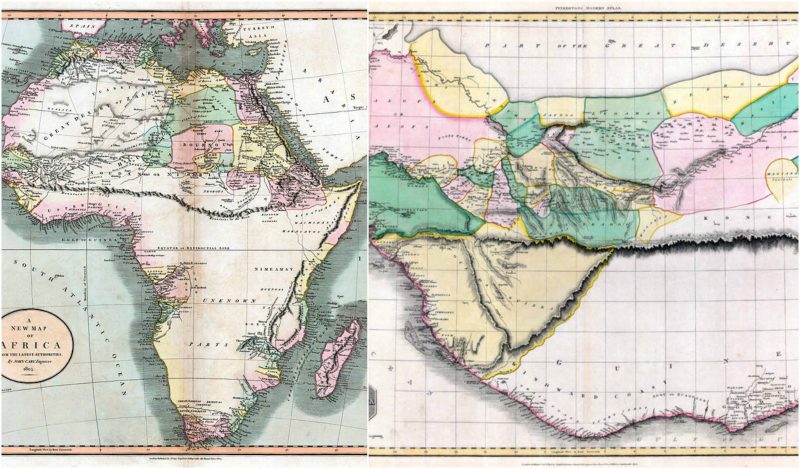From 1798 through the late 1880s, the Mountains of Kong were charted on the maps of Africa. It was believed that they were a mountain range spread on the territory of West Africa close to the Highland source of the Niger River, near Tembakounda in Guinea. The mountains continued East, to the Central African Mountains of the Moon which were also fictitious and it was believed that there was the source of the White Nile.
James Rennell, an English cartographer and also the so-called “Father of the Indian Geography,” produced the first map of the Mountains of Kong on which was charted the Niger evaporating inland at Wangara. The map was a result of the explorations made in the area by the Scottish explorer Mungo Park in 1798. Six years later, in 1804, the mountains were included on a map as “Geburg Kong,” made by the German map maker Johann Reincke. The next year, in 1805, the famous London engraver and author of “The New and Correct English Atlas,” John Cary, established the first link between the Mountains of Kong and the Moon Mountains.
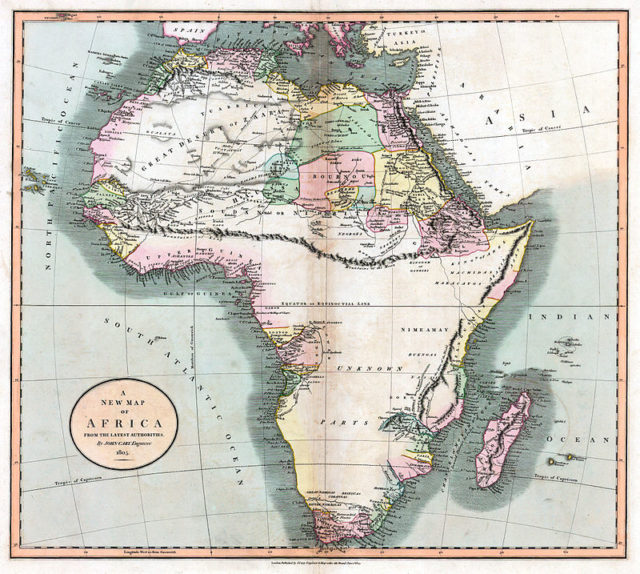
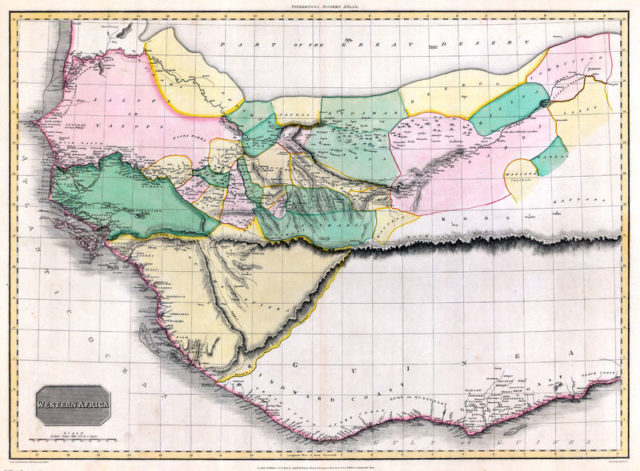
The strangest thing is that, during the 19th century, many famed explorers of West Africa included the mountains on their charts and maps which had been produced after their survey of the area.
Among these explorers were the Scottish explorer of West and Central Africa, Hugh Clapperton, who sought the course of the Niger River in its upper reaches;the Cornish explorers Richard Lemon Lander and his brother John Lander, who explored West Africa; the famous René Caillié, French explorer who surveyed the highlands of Guinea at Fouta Djallon, close to the source of Niger.

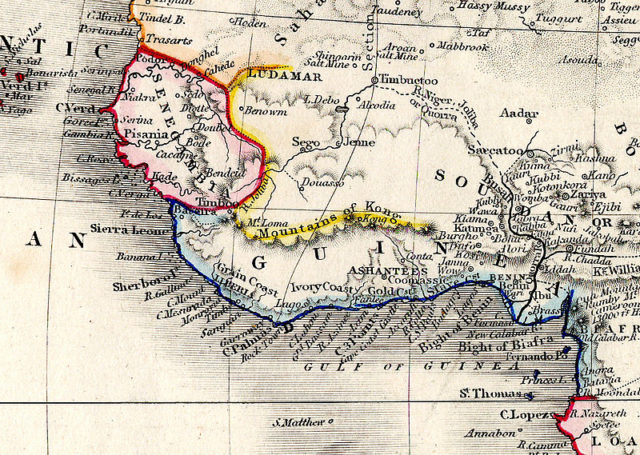
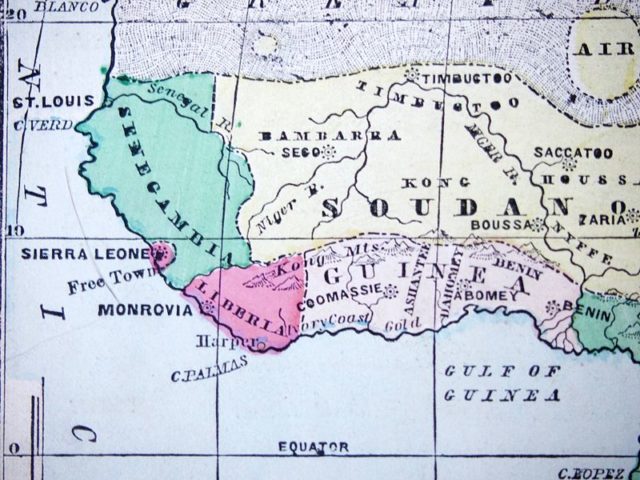
The historians Phillip Porter and Thomas Basset have identified forty different maps that show the Mountains of Kong, published between 1798 and 1892. And even though later explorers failed to reach and locate the mountain range, it still appeared on the maps for almost a century. Finally, the French explorer, Louis Gustave Binger revealed that the mountains were fictitious after his two-year expedition between 1887 and 1889, during which he charted the Niger River from its mouth in the Gulf of Guinea and through Côte d’Ivoire.
And yet, the 1928 Bartholemew’s Oxford Advanced Atlas still included the range, locating it t 8° 40′ N, 5° 0′ W. Even in 1995, the Mountains of Kong were included in Goode’s World Atlas by mistake.
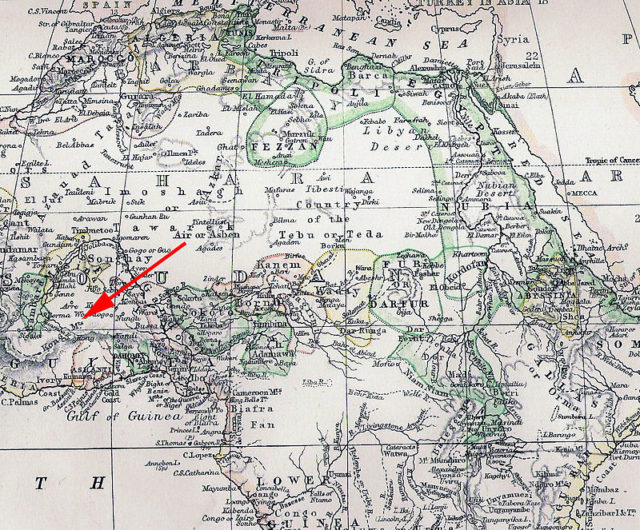
There is the town of Kong in the Ivory Coast which dates to the 12th century, so the name of the mountains has probably derived from it. During the 17th century, it formed the Kong Empire which later passed under the French colonial rule.
There is also a range of hills, named Kong Hills, which are part of the band of high ground which separates the Western Africa’s central plains from the coast regions. However, the hills are less than 2000 feet high and less than 700 feet above the country level. Today, it is still unclear how these hills were once mistaken for mountains.
